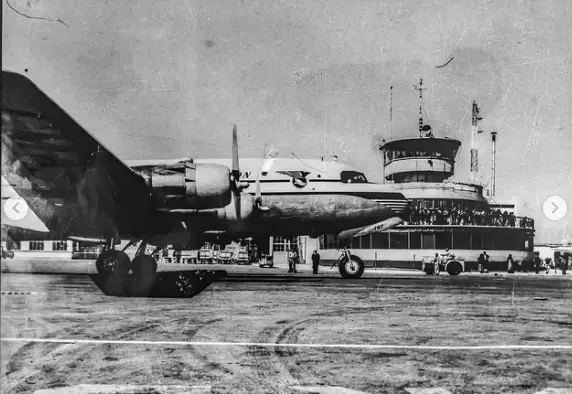
The Benito Juárez International Airport of Mexico City (AICM) marks its 97th anniversary, reaffirming its place as the beating heart of Mexican aviation and one of the most iconic airline terminals in Latin America.
From its humble beginnings as a small landing field on the eastern edge of Mexico City, the AICM has become the nation’s primary gateway to the world — a symbol of progress, resilience, and innovation that mirrors nearly a century of national history.
The airport’s first recorded landing occurred on November 5, 1928, when Captain Felipe H. García piloted a Hanriot biplane onto runway 10/28 at what was then called the Central Air Port. That same year, authorities built an access road from Calzada México–Puebla —now known as Boulevard Aeropuerto— along with a parking area, aircraft platform, and two rudimentary runways. Although construction was briefly interrupted, the vision of a modern air hub had taken hold.
In 1929, the Mexican Air Transportation Company reached an agreement with the Ministry of Communications and Public Work Projects (SCOP) to resume expansion. This collaboration gave rise to what would later become one of the most important aviation centers in the Americas.
By the 1930s, the airport had already begun to reflect Mexico’s growing ambition. Following the 1932 earthquakes, the original terminal was rebuilt and replaced by a new structure inaugurated in 1939, complete with a modern control tower and a mural by artist Juan O’Gorman entitled The Conquest of Air by Man, celebrating humankind’s mastery of flight.
The postwar years brought further expansion. In 1949, a major modernization project began, culminating in the opening of the current Terminal 1 building in 1952 —a facility that symbolized the nation’s economic recovery and growing international presence. Decade after decade, the AICM adapted to Mexico’s rapid urban growth, evolving transportation needs, and increasing global connections.
Today, the AICM operates as Mexico’s busiest and most important airport, handling millions of passengers annually and connecting with 44 domestic and 50 international destinations through 27 airlines —five Mexican and 22 foreign. The airport serves as a crucial hub for commerce, tourism, and diplomacy, linking Mexico to North America, Latin America, Europe, and Asia.
Despite challenges such as overcapacity, modernization demands, and seismic risks, the AICM has consistently proven its ability to adapt. It has undergone numerous upgrades, including runway extensions, new boarding gates, expanded customs and immigration areas, and sustainability measures to reduce its environmental impact.
In a statement commemorating the anniversary, the Ministry of the Navy (SEMAR) —which currently oversees the Benito Juárez Airport Group— emphasized the AICM’s historical and strategic importance.
“The Mexico City International Airport remains the nation’s principal hub, both for the volume of operations and its connectivity. It is not only an essential infrastructure for the country’s mobility but also a reflection of nearly a century of innovation, perseverance, and national pride.”
Throughout its 97 years, the AICM has been a witness to history —receiving heads of state, global leaders, artists, athletes, and millions of travelers who have passed through its terminals. It has stood through wars, earthquakes, and economic transitions, serving as a bridge between Mexico and the world.
Looking ahead to its centennial in 2028, the airport continues to invest in modernization and service quality, while preparing for the growing role of multi-airport coordination in the Mexico City region, alongside Felipe Ángeles International Airport (AIFA) and Tulum International Airport.
As the capital’s gateway to the skies nears its 100th year, the AICM remains more than a transportation hub —it is a living testament to Mexico’s determination to connect, progress, and soar.
Related: Mexico Receives Over 14 Million Foreign Tourists So Far in 2025
Mexican Press Agency is part of ALMA, which is dedicated to news and information about Mexico and Mexicans in the United States and is a fiscally sponsored project of Social Focus, a 501(c)(3) nonprofit organization based in Redwood City, California.